Comparing cempedak vs jackfruit: Both belong to the same family, Moraceae, and look similar, but have slight differences.
There is a fascinating difference in taste, texture, and nutritional properties.
Jump to:
What is Cempedak?
Cempedak is an edible fruit with a multitude of benefits. It is scientifically known as Artocarpus integer, and hails from the Moraceae family, just like its well-known cousin, jackfruit, and its distant relative, breadfruit.
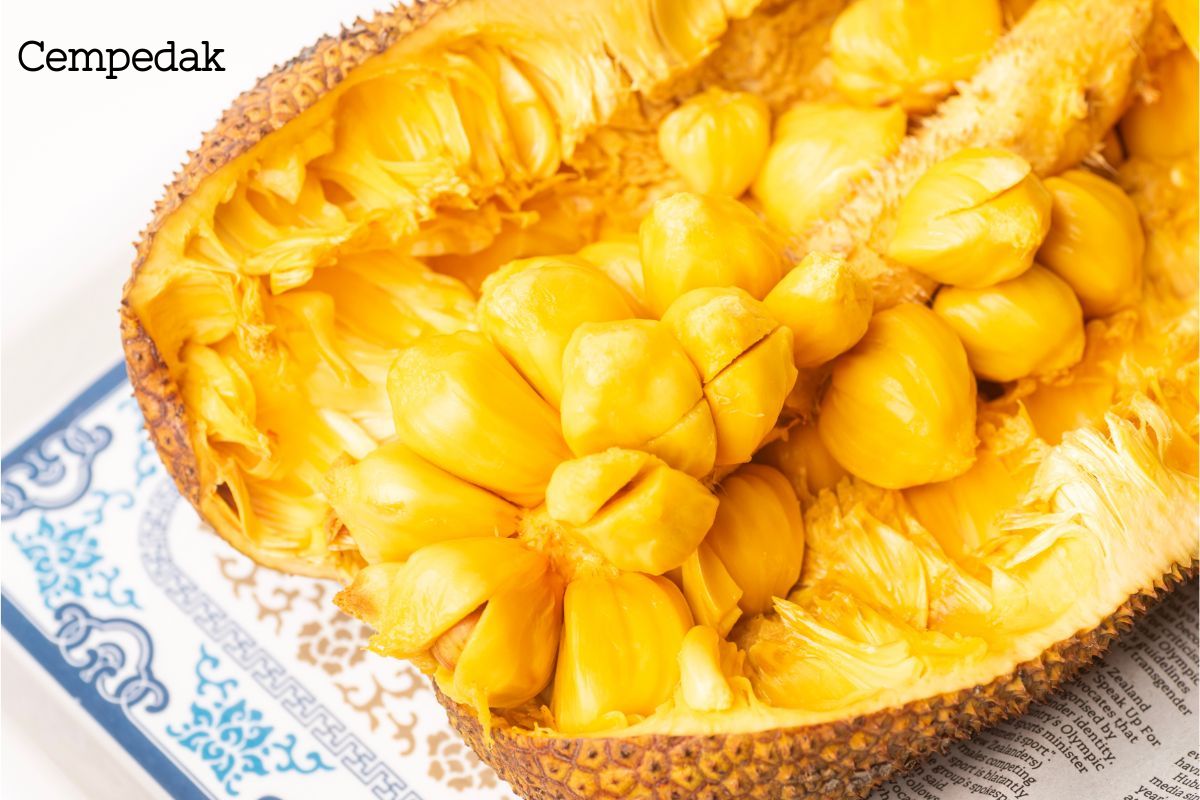
Cempedak trees are most commonly found in Southeast Asia, particularly in countries like Indonesia, Malaysia, and the Philippines, this exotic fruit thrives in warm, tropical regions.
Appearance
Its appearance is remarkable, boasting a large, oblong shape, and covered in spiky, green, or yellowish skin.
Aroma
When fully ripe, the fruit emits an enticing, sweet fragrance, signaling its readiness to be savored.
Flesh
Peeling back the spiky exterior of a ripe cempedak reveals a soft, golden flesh that is both creamy and tender.
Taste
Its taste is a blend of sweet and tropical flavors, with hints of banana, pineapple, and mango.
Nutrients
Cempedak fruit is naturally rich in vital nutrients, such as dietary fiber, vitamin C, vitamin A, potassium, and antioxidants, making it an excellent addition to a wholesome diet.
its antioxidants help combat oxidative stress, protecting cells from damage. The fruit's wealth of vitamins and minerals contributes to overall well-being, supporting the immune system, vision, and heart health.
Culinary Uses
While cempedak can be enjoyed fresh as a delightful snack, it is also a versatile ingredient in various culinary creations. Its unique taste and texture lend themselves well to both sweet and savory dishes.
Some popular preparations include deep-frying the ripe fruit to achieve a crispy, caramelized exterior, or blending it into smoothies, ice creams, and desserts for a tropical twist.
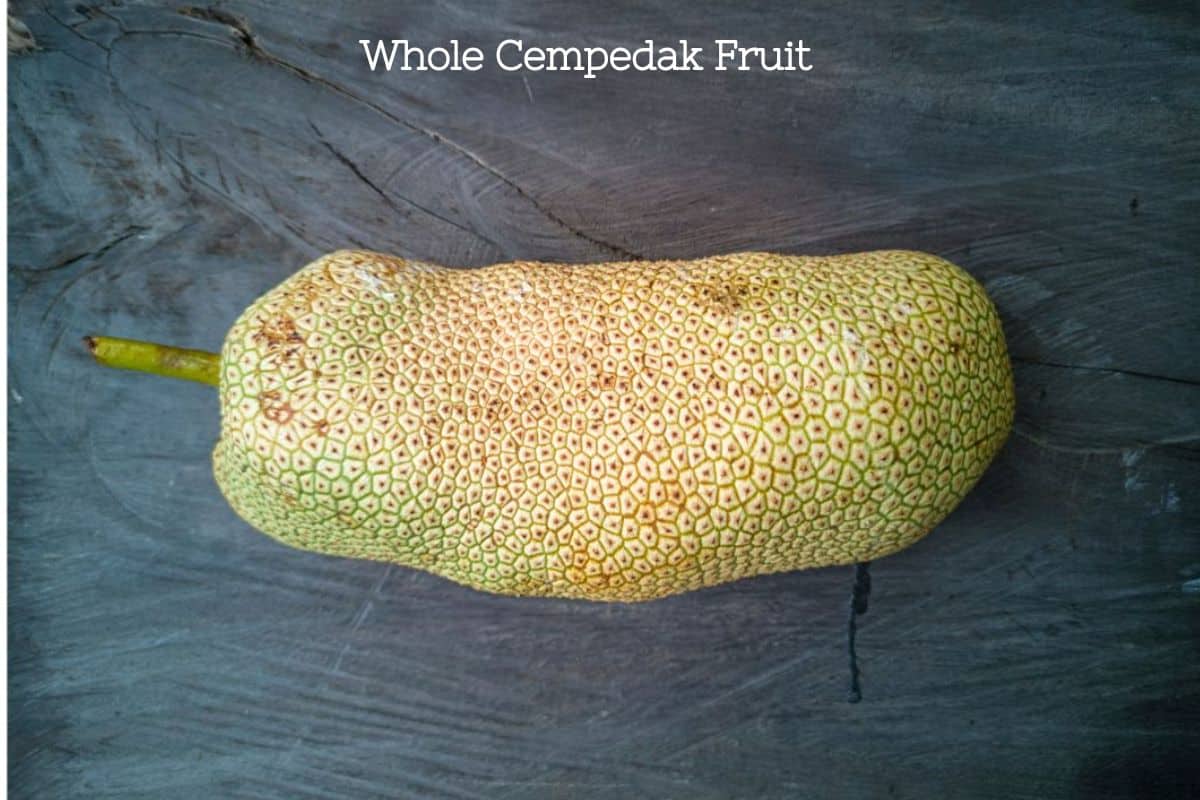
Incorporating this tropical gem into one's diet not only enhances taste experiences but also introduces a nutrient-rich component that nourishes the body.
 9x Cempedak (Artocarpus int...Shop on Amazon
9x Cempedak (Artocarpus int...Shop on Amazon
Health Benefits of Cempedak
Cempedak, with its exotic flavor and appealing aroma, is a delicious tropical treat and a treasure trove of health benefits.
The incredible array of nutrients and bioactive compounds present in this exotic tropical fruit, each contributing to its numerous medicinal benefits.
Rich in Vitamin C and Antioxidants
Cempedak boasts an impressive amount of vitamin C, a powerful antioxidant that aids in immune function, combats free radicals, and protects the body from various diseases and infections.
Heteriflavon C
Nutritional Powerhouse
With a high nutritional profile, cempedak provides essential vitamins, minerals, and dietary fiber, promoting optimal health and vitality.
Supporting Heart Health
Antifungal Properties
Cempedak's antifungal properties make it an effective natural remedy in combating fungal infections and other skin diseases.
Malaria Treatment Potential
Studies have revealed the presence of compounds in cempedak seeds that exhibit anti-malarial activity, eliminating malarial parasites and offering promising avenues for malaria treatment.
Regulating Blood Pressure
The bioactive components found in cempedak have been associated with blood pressure regulation, contributing to a healthier cardiovascular system.
Traditional Medicinal Uses
In traditional medicine, cempedak has been utilized to address various health issues. The decoction of cempedak roots is known for its ability to treat and prevent a urinary tract infection.
Anti-Inflammatory Properties
Cempedak contains compounds with anti-inflammatory effects that may help alleviate inflammation-related conditions, contributing to improved joint health and reduced inflammation in the body.
Immune System Support
The fruit's high vitamin C content and antioxidant nature strengthen the immune system, helping the body fend off infections and illnesses more effectively.
Antiviral Potential
Preliminary research suggests that cempedak may possess antiviral properties, which could be beneficial in combatting certain viral infections.
Anticancer Properties
Some studies have indicated that cempedak's bioactive compounds might have the potential to inhibit the growth of certain cancer cells, although more research is needed in this area.
Wound Healing
Cempedak leaves and sap has been traditionally used to promote wound healing, with their natural properties helping to accelerate the repair of damaged tissues.
Treatment of Diarrhea
In some traditional practices, cempedak seeds are used as an astringent to treat diarrhea and support digestive health. It has even been used as a cure for digestive tract ulcers.
Natural Energy Booster
The fruit's natural sugars and nutrient content make it a source of sustainable energy, making it a healthy snack option for active individuals.
Incorporating cempedak into your diet can be a holistic way to nourish your body with vital nutrients, enhance immune function, and protect against various ailments.
Please be sure to consult with a qualified healthcare professional before using this or any fruit medicinally.
 9x Cempedak (Artocarpus int...Shop on Amazon
9x Cempedak (Artocarpus int...Shop on Amazon
Ways to Enjoy Cempedak
Cempedak, with its luscious sweetness and unique flavor profile, offers a delightful culinary experience that can be savored in various mouthwatering ways.
Here are some delicious ways to consume cempedak:
Fresh and Ripe
The simplest and most authentic way to enjoy cempedak is to eat raw fruit fresh and ripe.
Once the fruit emits its sweet, enticing aroma, it's a sign that it's ready to be relished. Simply peel off the spiky skin to reveal the soft, golden flesh and savor its tropical goodness. This way preserves the most beneficial nutritional content.
Fritters
Cempedak can be transformed into delectable fritters by coating the ripe slices with a light batter and deep-frying them in avocado oil until golden brown.
The result is a crispy exterior that complements the creamy and sweet interior, creating a delightful contrast of textures and flavors.
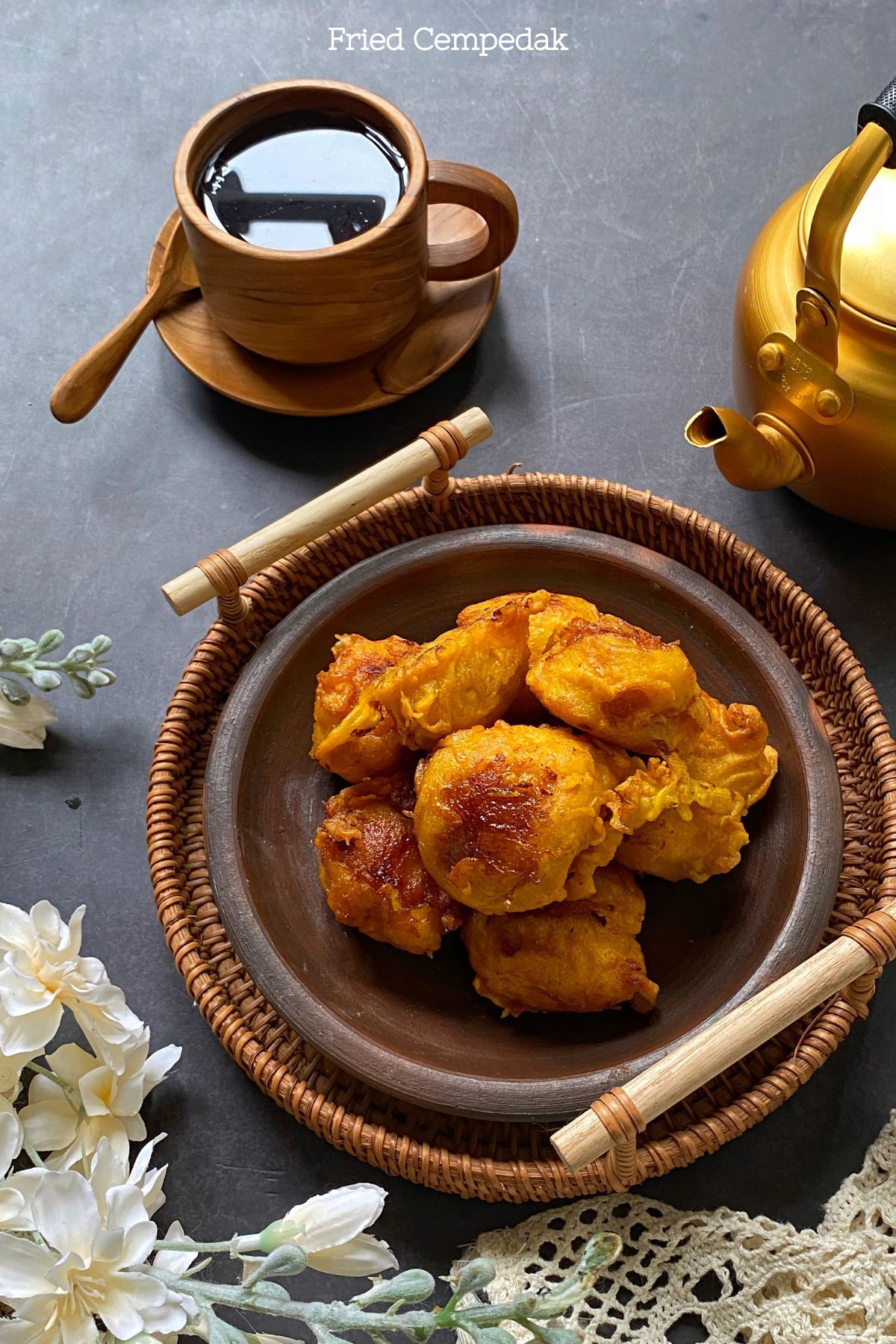
Smoothies and Shakes
Blend ripe cempedak flesh into smoothies or shakes for a tropical twist to your favorite beverage. Combine it with other fruits like bananas, pineapples, or mangoes, along with some yogurt or plant-based milk for a refreshing and nutritious treat.
Ice Cream and Sorbet
The rich, creamy texture of cempedak makes it an excellent ingredient for homemade ice cream or sorbet. Process the ripe flesh with some coconut milk or cream and sweeten it to taste before freezing it to create a delightful frozen dessert.
Jam or Preserve
Transform cempedak into a delicious jam or preserve that can be spread on toast or used as a topping for desserts.
By adding a touch of sugar and lemon juice, you can preserve the fruit's natural sweetness and flavor.
Pancakes or Waffles
Incorporate cempedak into pancake or waffle batters for a unique and flavorful breakfast. As one of the sweetest fruits, it adds a delightful twist to your morning meal.
Curry
In savory dishes, cempedak can be used in curries or stews for a tropical and aromatic touch. Its flavor complements various spices and seasonings, creating a tantalizing fusion of tastes.
Chips
Thinly slice unripe cempedak and fry them until crispy to create a nutritious and flavorful snack that can be enjoyed on its own or as an accompaniment to dips.
Baked Goods
Incorporate cempedak into muffins, cakes, or bread for a delightful twist on traditional baked goods. The fruit's natural sweetness can reduce the need for additional sugar in recipes. Its seeds can also be ground and used as bread flours in recipes.
What is Jackfruit?
Jackfruit, the largest tree fruit globally, weighs up to 80 pounds, with a spiky green exterior turning pale yellow when ripe.
Its sweet, aromatic fragrance signals its readiness to be savored, revealing fleshy yellow bulbs, each encasing a large seed.
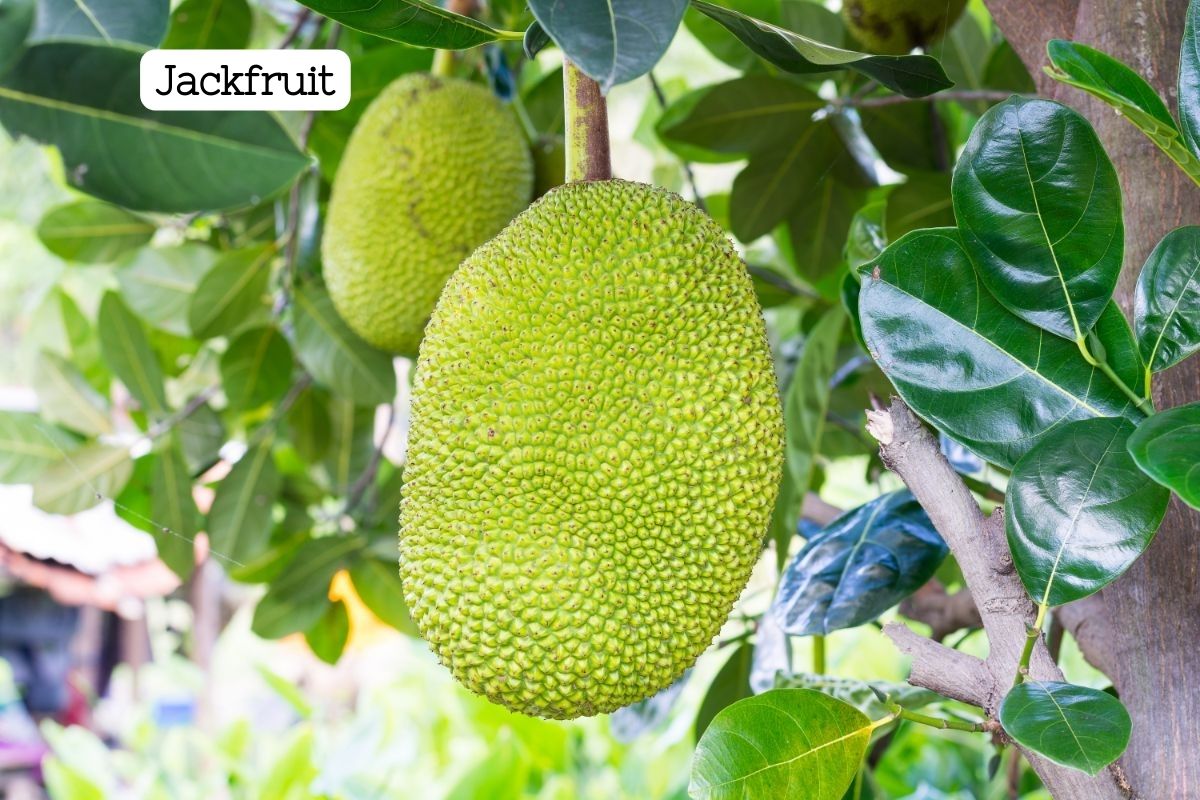
This tropical wonder, scientifically known as Artocarpus heterophyllus, is a species of tree with smooth bark, hailing from Southern Thailand, where it thrives abundantly. In Thailand, these large fruits are known as nangka.
The irregular-shaped fruit, a spiny fruit, boasts culinary versatility; the ripe fruit is sweet, while young jackfruit has a neutral flavor, making it an ideal meat alternative.
Jackfruit's immense size and unique texture make it an intriguing ingredient in various savory and sweet dishes worldwide.
Nutritional powerhouse
rich in vitamin C, potassium, dietary fiber, and small amounts of vitamins and minerals, offering a wholesome addition to a balanced diet.
Jackfruit trees' sustainability and low water and pesticide requirements make it an eco-friendly choice, promoting responsible and conscious consumption.
With deep-rooted cultural significance in South Asian countries and a rich culinary heritage, jackfruit stands as a symbol of abundance and celebration.
Health Benefits of Jackfruit
Jackfruit not only impresses with its culinary versatility but also offers an array of health benefits and potential medicinal uses. Here are the wonders of this remarkable tropical fruit:
Digestive Health
Jackfruit is an excellent source of dietary fiber, promoting regular bowel movements and supporting a healthy digestive system.
Immune System Support
Rich in vitamin C, jackfruit helps bolster the immune system, defending the body against infections and illnesses.
Antioxidant Properties
Jackfruit contains antioxidants that protect the body from free radicals, contributing to overall well-being.
Heart Health
High potassium content in jackfruit plays a role in maintaining healthy blood pressure, reducing the risk of cardiovascular issues.
Anti-Inflammatory Effects
Certain compounds in jackfruit have anti-inflammatory properties, potentially aiding in reducing inflammation-related conditions.
Diabetes Management
The fiber content in jackfruit can help stabilize blood sugar levels, making it a favorable choice for diabetes management.
Skin Health
Vitamin C, along with antioxidants in jackfruit, can promote healthy skin and combat signs of aging.
Weight Management
The fiber in jackfruit induces a feeling of fullness, aiding in weight management and curbing unnecessary snacking.
Bone Health
Jackfruit provides essential minerals like calcium and magnesium, supporting bone health and strength.
Anemia Prevention
Rich in iron, jackfruit can be beneficial in preventing anemia and promoting healthy blood production.
Antimicrobial Potential
Certain compounds in jackfruit exhibit antimicrobial properties, suggesting potential in combating certain infections.
Eye Health
The presence of vitamin A in jackfruit supports vision and good eye health.
Energy Booster
Jackfruit's natural sugars and nutritional profile make it a healthy energy source for an active lifestyle.
 Native Forest Organic Young...Shop on Amazon
Native Forest Organic Young...Shop on Amazon
Ways to Enjoy Jackfruit
Jackfruit, with its massive size and unique texture, offers a tantalizing array of culinary possibilities. I invite you to explore the diverse and delightful ways to enjoy this tropical marvel:
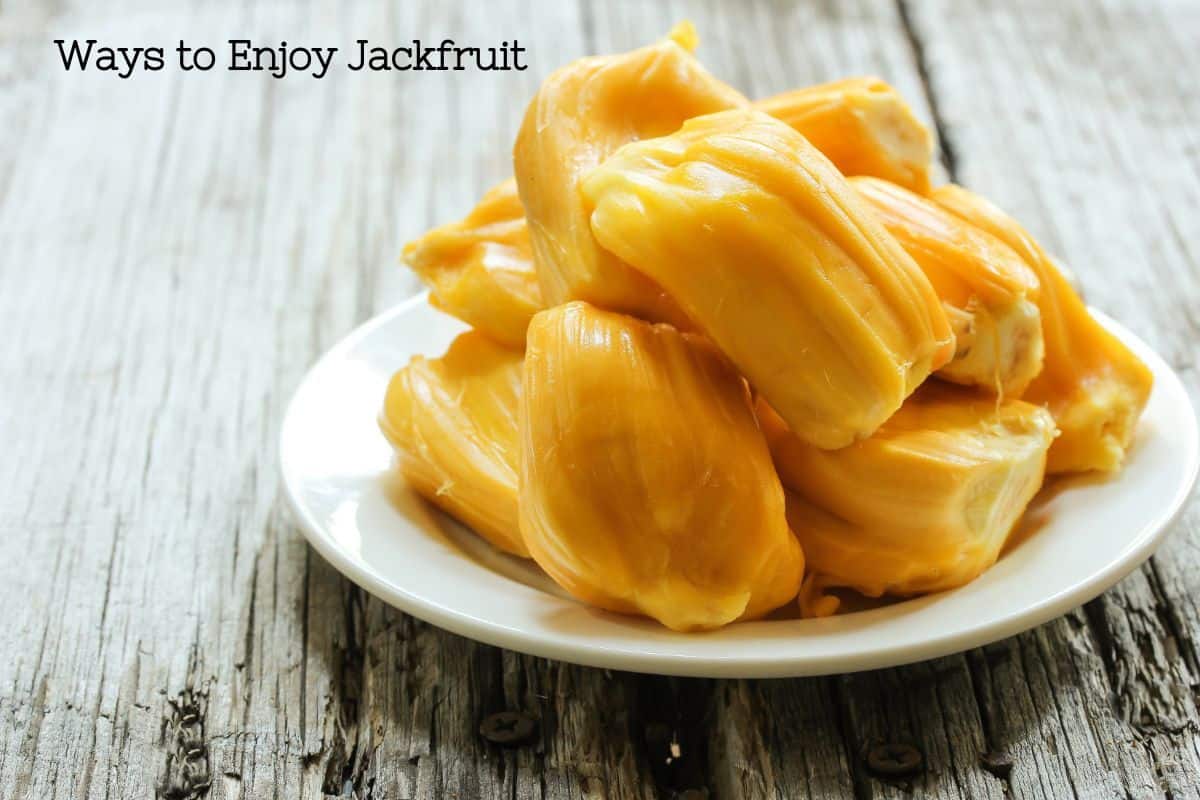
Fresh and Ripe
Experience the true essence of jackfruit by savoring it fresh and ripe. Peel off the spiky green skin to reveal the luscious, sweet, and aromatic golden flesh within.
Smoothies
Blend ripe jackfruit with other tropical fruits, such as bananas, mangoes, or pineapples, to create refreshing and nutritious smoothies.
Ice Cream
Whip up homemade jackfruit ice cream using the ripe fruit blended with coconut milk or cream for a delightful frozen treat.
Vegan Jackfruit Pulled "Pork"
Young jackfruit's fibrous texture makes it an excellent plant-based alternative to pulled pork. Cook it with savory spices and BBQ sauce for a delicious sandwich filling.

Curries and Stews
Incorporate jackfruit into curries or stews to add a unique, sweet twist to savory dishes.
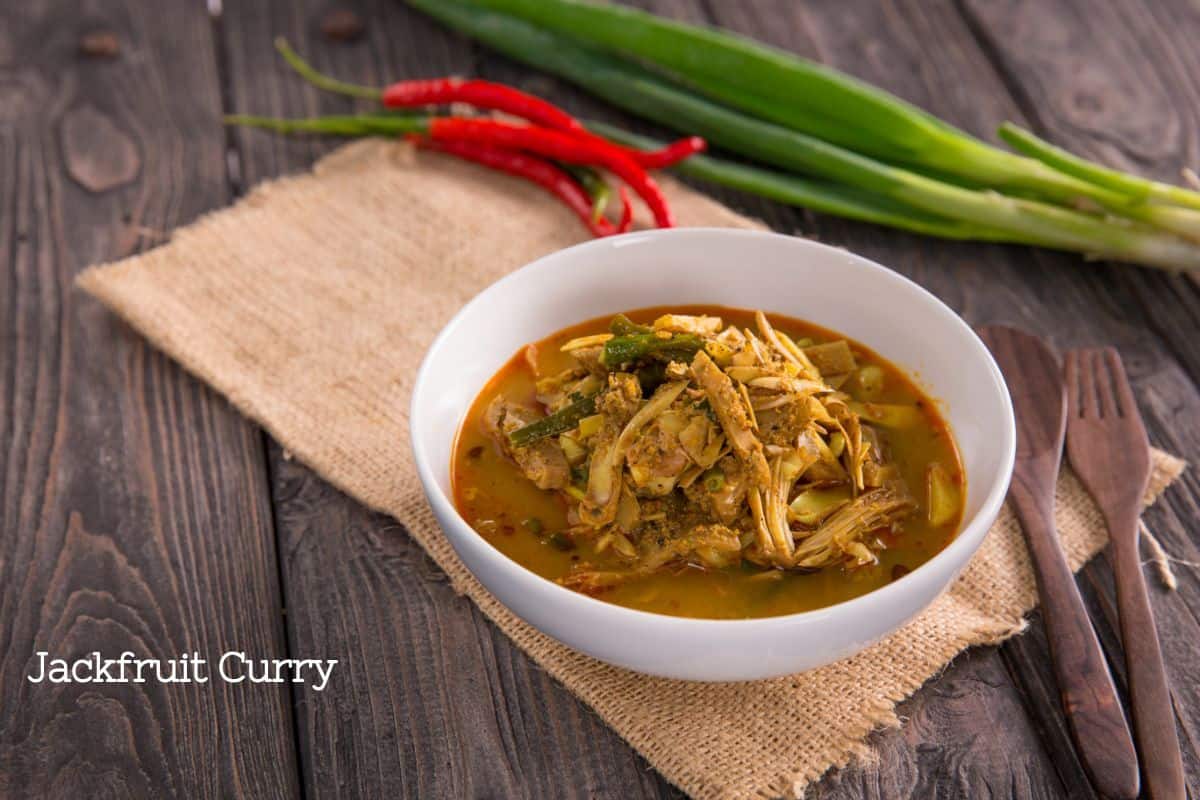
Jackfruit Lattes
A jackfruit latte is a creative spin on traditional coffee beverages, blending ripe jackfruit's sweetness and creaminess with espresso or milk for a tropical and delightful coffee experience.
Jackfruit Tacos
Seasoned and sautéed young jackfruit can be a delectable filling for vegan tacos.
Salads
Add ripe jackfruit cubes to fruit salads for a burst of tropical flavor.
Chips
Slice unripe jackfruit thinly and fry them until crispy for a nutritious and tasty snack.
Desserts
Explore various jackfruit-based desserts, like jackfruit crumbles, pies, and tarts.
Curry Puffs
Fold seasoned jackfruit into pastry dough and bake for savory curry puffs.
Burgers
Create plant-based jackfruit burgers, combining cooked jackfruit with complementary veggies and seasonings.
Chutneys
Whip up tangy and sweet jackfruit chutneys to pair with your favorite dishes.
Kebabs
Skewer marinated jackfruit chunks with colorful veggies for a delightful vegan kebab option.
Noodles
Make noodles using young jackfruit strips for a creative and nutritious twist on traditional pasta dishes.
Fritters
Dip ripe jackfruit slices in a light batter and fry them to make mouthwatering fritters.
 Mavuno Harvest Jackfruit Dr...Shop on Amazon
Mavuno Harvest Jackfruit Dr...Shop on Amazon
 Kitchen and Love, Jackfruit...Shop on Amazon
Kitchen and Love, Jackfruit...Shop on Amazon
 Upton's Naturals, Bar-B-Que...Shop on Amazon
Upton's Naturals, Bar-B-Que...Shop on Amazon
Comparing Cempedak and Jackfruit
The world of tropical fruits is a treasure trove of flavors, each offering unique tastes and textures. Let's delve into a comparison of cempedak and jackfruit.
While we are here, let's also compare these fruits' closest relatives: breadfruit and durian fruit, to unravel their distinctions and appreciate the diversity they bring:
Size and Appearance
- Cempedak: Smaller in size, cempedak typically weighs around 2 to 5 pounds, with yellowish-green spiky skin when ripe.
- Jackfruit: Jackfruit reigns as the largest tree fruit globally, reaching up to 80 pounds, with green spiky skin turning pale yellow when ripe.
- Breadfruit: Similar to jackfruit in size, breadfruit has smooth green skin, and its interior is creamy white.
- Durian Fruit: Known as the "king of fruits," durian is sizeable, ranging from 2 to 7 pounds, with a thorny husk and a pungent aroma when ripe.
Flavor and Texture
- Cempedak: Cempedak boasts a unique flavor, resembling a blend of durian and jackfruit, with a sweet and fragrant taste. Its texture is creamier and less fibrous.
- Jackfruit: Jackfruit offers a sweet and mild taste, often compared to a combination of pineapple, banana, and mango. Its texture is fibrous and chewy, especially when unripe.
- Breadfruit: Breadfruit's flavor is starchy and mildly nutty when cooked. Its texture is firm and potato-like, ideal for various culinary applications.
- Durian Fruit: Durian has a divisive reputation due to its horrible smell, but its taste is a mix of sweet, custard-like richness with savory hints and bitterness. Its texture is creamy and custard-like.
Culinary Uses
- Cempedak: Consumed fresh and ripe, and used in desserts, fritters, and curries.
- Jackfruit: Versatile in both ripe and unripe forms, used in vegan and vegetarian dishes, and as a meat alternative when unripe.
- Breadfruit: Cooked and used as a starchy staple food, boiled, roasted, fried, or turned into flour for various recipes.
- Durian Fruit: Eaten fresh and loved by some for its unique taste and texture, but not commonly used in culinary applications.
Geographic Origin
- Cempedak: Native to Southeast Asia, particularly Malaysia, and Indonesia, also found in countries like Thailand and the Philippines.
- Jackfruit: Believed to have originated in the Indian subcontinent and is widely cultivated in tropical regions worldwide.
- Breadfruit: Native to the Pacific Islands and widely grown in tropical regions across the globe.
- Durian Fruit: Native to Southeast Asia, particularly Malaysia, Indonesia, and Thailand.
Nutritional Content
- All four fruits are rich in essential nutrients, contributing to a healthy diet and offering various health benefits. However, jackfruit does have a lower glycemic index than its counterparts.
Culinary Versatility
- Cempedak, jackfruit, breadfruit, and durian showcase culinary versatility with their ability to be used in a wide range of dishes, whether sweet or savory.
While cempedak, jackfruit, breadfruit, and durian fruit each bring their own unique flavors and textures, it is intriguing to observe their botanical kinship within the Moraceae family.
Nutrition Facts
| Nutrient | Cempedak (per 100g) | Jackfruit (per 100g) | Durian Fruit (per 100g) | Breadfruit (per 100g) |
|---|---|---|---|---|
| Calories | 85 | 95 | 147 | 103 |
| Carbohydrates (g) | 21.1 | 23.2 | 27.1 | 27.1 |
| Protein (g) | 1.5 | 2.4 | 1.5 | 1.0 |
| Fat (g) | 0.2 | 0.3 | 5.3 | 0.2 |
| Fiber (g) | 1.8 | 1.5 | 1.5 | 4.9 |
| Vitamin C (mg) | 19.2 | 13.8 | 19.7 | 29.0 |
| Potassium (mg) | 143 | 303 | 436 | 490 |
| Calcium (mg) | 24 | 24 | 6 | 17 |
| Iron (mg) | 0.6 | 0.6 | 1.5 | 0.5 |
| Magnesium (mg) | 29 | 37 | 30 | 30 |
Note: The nutritional values provided above are approximate and may vary depending on factors such as ripeness and variety. Always refer to specific nutritional labels for accurate information.
Where to Find Cempedak and Jackfruit
In the United States, you can find cempedak and jackfruit in certain regions, particularly in areas with a significant Asian population or specialty grocery stores that cater to tropical fruits. Here are some places where you may find these fruits:
Asian Grocery Stores
Look for Asian grocery stores or markets, particularly those with a focus on Southeast Asian or tropical produce. These stores often import a variety of fruits from different countries, including cempedak and jackfruit, either fresh, canned, or frozen.
Farmer's Market
In some areas with a diverse agricultural community, you might find cempedak and jackfruit at farmers' markets during the respective fruit seasons. Some farmers specializing in tropical fruits may grow these fruits locally and offer them at farmers' markets.
Specialty Stores and Supermarkets
Some specialty stores or supermarkets with an international or tropical fruit section may carry canned or frozen cempedak and jackfruit, especially in regions with a demand for exotic produce.
Online Retailers
If you can't find cempedak or jackfruit in local stores, consider searching for online retailers that specialize in tropical fruits. They might offer fresh or processed versions that can be shipped directly to your location.
It's important to note that the availability of these fruits may be limited in certain areas and can vary based on the season and demand.
Tropical fruits, cempedak, and jackfruit may be more common in warmer regions of the U.S. or during specific times of the year when they are in season.
If you are unable to find fresh cempedak and jackfruit, you may explore canned or frozen options, which can still provide a taste of these tropical delights.
 Upton's Naturals, Bar-B-Que...Shop on Amazon
Upton's Naturals, Bar-B-Que...Shop on Amazon
Final Thoughts
Have you had the pleasure of savoring the tropical delights of cempedak or jackfruit? We would love to hear about your experiences with these remarkable fruits.
Share your stories and favorite recipes in the comments below, and let's celebrate the rich tapestry of tropical flavors together!
For more exciting nutrition and wellness information, as well as a bounty of delicious recipes, subscribe to our newsletter. Join our community of health enthusiasts and embark on a journey towards a wholesome and fulfilling lifestyle.
Stay updated on the latest discoveries in holistic nutrition and embrace the wonders of nourishing your body and mind.
Cheers to vibrant health and culinary adventures!
Natalie



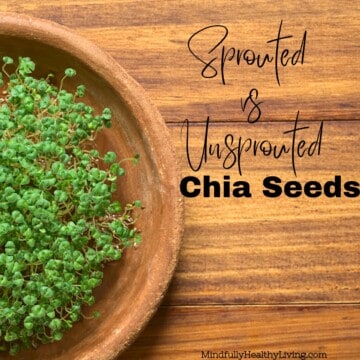



Covita says
Great article- learned alot. inspired to spend more time with both
Natalie Perry says
wonderful! thank you for sharing